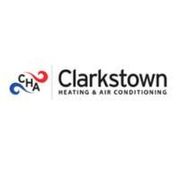What Are the Differences Between Traditional Central Heat & Ductless Systems?

Upgrading your heating system will eliminate equipment inefficiencies that increase energy usage, all while improving indoor air quality and comfort. If you’re not sure what type of system will meet the demands of heating your space, below are a few differences between traditional central heat and ductless systems to aid the decision-making process.
How Does a Traditional Central Heat System Work?
A central heating system warms air in one location and then delivers it throughout the rest of the space through a series of ducts and vents. In many homes throughout the country, furnaces are used to heat cold air. The air is warmed over a heat exchanger before moving through the ducts and vents. After air cools, it re-enters the furnace, where the process begins again. Equipment exhaust is typically expelled through vents installed in the chimney. It’s important to perform routine maintenance and repairs with central heat equipment, as cracks in ductwork, burnt out burners, air filter clogs, and additional problems can lead to diminished system performance and increased energy consumption.
How Does a Ductless System Differ From Traditional Heating Equipment?
 While furnaces heat air and pump it throughout the house, ductless systems are designed to meet the demands of heating individual rooms. Homeowners control room temperatures through wall-mounted units, which are connected to compressor units installed outside of the house. Because air isn’t transported through ducts, you won’t have to worry about heat loss as it travels through the channels—making ductless systems the more efficient heating choice for many homeowners.
While furnaces heat air and pump it throughout the house, ductless systems are designed to meet the demands of heating individual rooms. Homeowners control room temperatures through wall-mounted units, which are connected to compressor units installed outside of the house. Because air isn’t transported through ducts, you won’t have to worry about heat loss as it travels through the channels—making ductless systems the more efficient heating choice for many homeowners.
If you’re considering upgrading to a ductless system, reach out to Clarkstown Heating & Air Conditioning in Pearl River, NY, for assistance. The Mitsubishi Electric Diamond Contractors™ will help navigate options to find a ductless heating system to boost your comfort. To learn more about Mitsubishi Electric® ductless heating and cooling equipment available in Rockland County, call (845) 620-1000, or visit the company online for details. Don’t forget to like them on Facebook for updated service announcements.
About the Business
Have a question? Ask the experts!
Send your question

